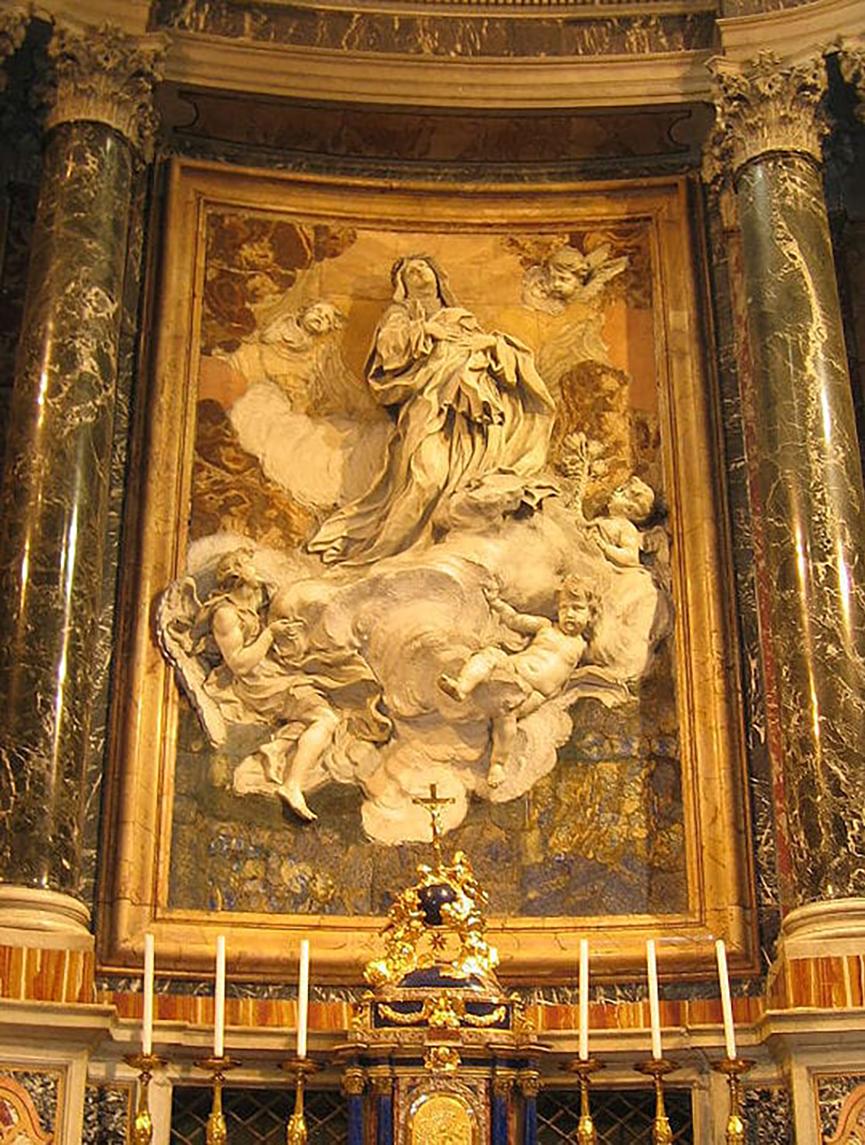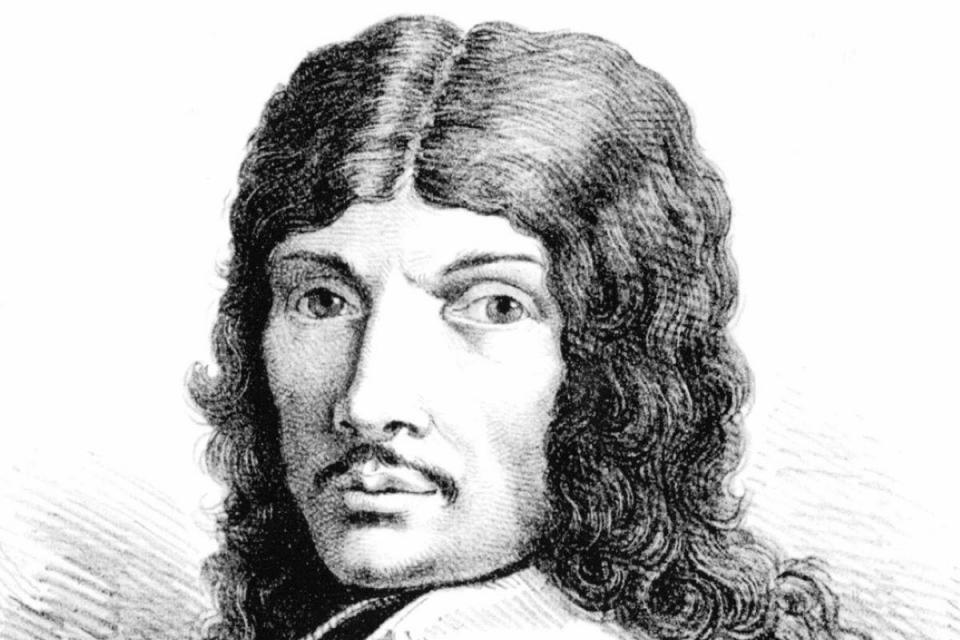The year 2027 might still look far away, yet I hope this call is made well in advance so that by the time we reach that year we can finally have a monument in honour of Melchiorre Cafà.
On September 4, 2027, it will be 360 years since his tragic death, and it would be a shame if Malta were to let such a milestone pass without giving proper tribute to one of the greatest artists our country has ever produced.
Cafà was born in Vittoriosa in 1636 and left Malta as a young man to pursue his talent in Rome. There, he rose quickly to become one of the most admired sculptors of his generation. In a letter dated May 1665, the Order of St John’s ambassador in Rome wrote that the great Gian Lorenzo Bernini himself was heard saying, on more than one occasion, that a young Maltese sculptor might have surpassed him in his profession.
 A portrait of Cafà in the corridors of the University of Malta Valletta Campus.
A portrait of Cafà in the corridors of the University of Malta Valletta Campus.
Such words, attributed to the most celebrated sculptor of the baroque age, underline the extraordinary promise of Cafà and the loss his untimely death represented not only for Malta but for European baroque era.
His life was cut short in 1667 when he died in a foundry accident while working on an altar for St John’s Co-Cathedral in Valletta. His works, however, live on and are celebrated in some of the most important collections and churches in Europe.
Notably, his artistic legacy extends far beyond the continent, with the devoted statue of St Rose of Lima in Peru, and other works treasured in world-renowned institutions such as the Metropolitan Museum in New York, the Fogg Museum at Harvard and the Hermitage in St Petersburg.
Despite this, Malta’s remembrance of him remains surprisingly modest. At present, the only public recognition is a portrait that hangs quietly in a corridor of the University of Malta Valletta Campus. While restored and preserved, it is almost unnoticed by those who pass by. That is the sum of our tribute to an artist who is, arguably, the greatest Maltese sculptor of all time.
 Ecstasy of St Catherine by Melchiorre Cafà at the church of Santa Caterina di Siena at Magnapoli, Rome.
Ecstasy of St Catherine by Melchiorre Cafà at the church of Santa Caterina di Siena at Magnapoli, Rome.
It is also worth recalling that Melchiorre’s brother, Lorenzo Gafà, left behind a legacy of his own through the magnificent architecture that still graces our islands. Lorenzo designed some of Malta and Gozo’s most iconic churches, including the majestic Mdina cathedral, among many other important buildings that continue to define our skyline. There is a commemorative plaque dedicated to him on one of the walls of St Lawrence parish church in Vittoriosa, and also a notable bust of Lorenzo, possibly sculpted by his own brother Melchiorre.
As someone who happens to share the same surname, I feel an even closer connection to their memory.
It would be fitting to also consider a joint monument to both brothers
Yet I make this appeal not only as Daniel Gafà, but as a proud Maltese citizen who believes it is our duty to properly pay tribute to those who carried the name of our small island beyond our shores.
This is surely not enough. Cafà deserves visible and lasting recognition, perhaps in the city of his birth – Vittoriosa. I call on the authorities to consider establishing a monument or plaque in Vittoriosa to mark his roots, and perhaps even a proper commemoration on September 4, 2027.
It would be fitting to also consider a joint monument to both brothers, one who excelled in sculpture and the other in architecture, as together they embody Malta’s greatest contribution to the baroque era.
 Depiction of Melchiorre Cafà by Giuseppe Calleja
Depiction of Melchiorre Cafà by Giuseppe Calleja
Just look at how the Italians honour their baroque geniuses, celebrating artists such as Bernini, Borromini and Caravaggio with monuments, memorials, and the wide recognition of their names and works.
Their legacies are woven into Italy’s cultural pride and presented with great reverence. Yet here in Malta, we fail to properly honour our own greatest baroque artist in a country where baroque architecture is all around us.
This is not only a missed opportunity but also a sign of how little pride and knowledge we show in our rich past and in the protagonists who shaped it – politicians apart.
Let us ensure that by 2027 Malta honours Cafà in a way that reflects his genius and his place in our history. It is our responsibility to make sure that his memory is not left hidden in a corridor but placed at the centre of our cultural heritage.
Daniel Gafà holds a master of arts in literary tradition and popular culture.

